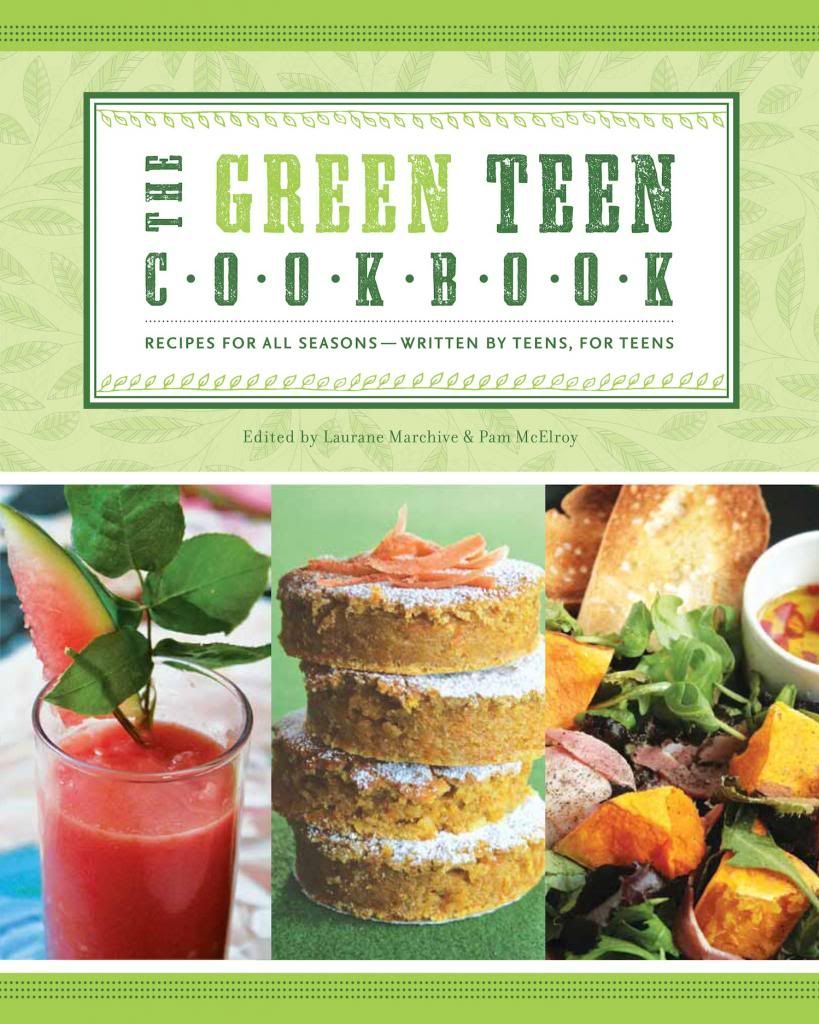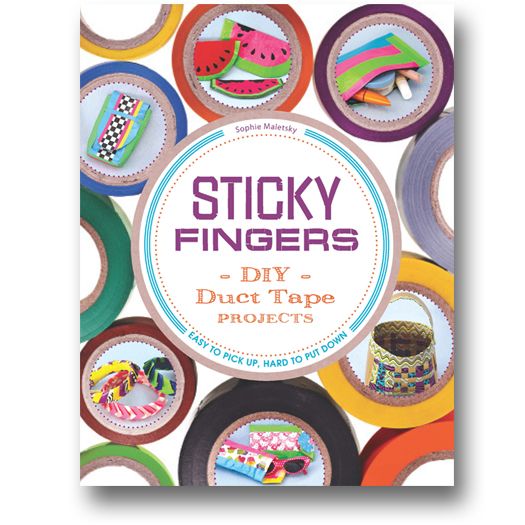 Title: Sticky Fingers: DIY Duct Tape Projects
Title: Sticky Fingers: DIY Duct Tape ProjectsAuthor: Sophie Maletsky
Publisher: Zest Books
Publication Year: 2014
Read: August 2014
Where It Came From: Paper review copy from publisher
Genre: Crafty How-To
The Basics
Sticky Fingers: DIY Duct Tape Projects is pretty much what’d you expect with a title like that—it’s a how-to book that covers the basics of making all sorts of accessories and doodads out of duct tape, and then provides tutorials for over 70 different projects, from simple things like bows and flowers, on up to wallets, purses, desk organizers, and all kinds of other crazy things that might make you think, “You can do that with duct tape??” From information about different brands of duct tape to consider using, to what sort of work surface works best with the material, to hints on ways to use up the last little bits of tape on the roll and then the cardboard center of the roll as well, this book pretty much covers the subject of duct taping crafting from crash course through 400-level class. Both of us decided to take ‘er for a spin before writing up our individual takes on the book, so read on for opinions and project photos!
Alyssa’s Take
I feel like I’m turning into a crochety old person when I say this, but I remember when I was in junior high and high school, and my friends would make stuff out of ye olde silver duct tape (‘twas all there was, doncha know)—mostly wallets and backpack repair patches and decorations on skateboards and stuff like that. It’s so funny to me that it has exploded into this whole new genre of crafting—funny and cool! Though I like to have at least one good craft project going in my life at all times, I had never tried my hand at duct tape artificery until this book arrived in the mail.
I found the book to be comprehensive, easy to understand, and concisely written. I liked that it started out with the basic background info—types of work surfaces to use, ones to avoid so you don’t end up damaging furniture, the different types of tape available, where to buy them, tapes that won’t work, how to set up both basic and advanced portable work stations…all kinds of stuff that it might not even occur to the duct tape noob to think about. Following that is an invaluable chapter about making the basic duct tape components you will need to craft the projects that follow, and then there are seven chapters full of those projects themselves: quick crafts, wallets, purses, wearable accessories, school supplies, room décor…wow. So much!
Feeling inspired by the bow trend, I decided to try my hand at the fan-fold bow—simple enough that I wouldn’t feel overwhelmed and ragequit, but cute enough that I might actually turn it into a hair accessory someday. In an homage to my teenage years (and my laziness about getting to a store to buy the pretty stuff), I used the classic silver duct tape I found living in my garage. Here’s how the process went, and the result:
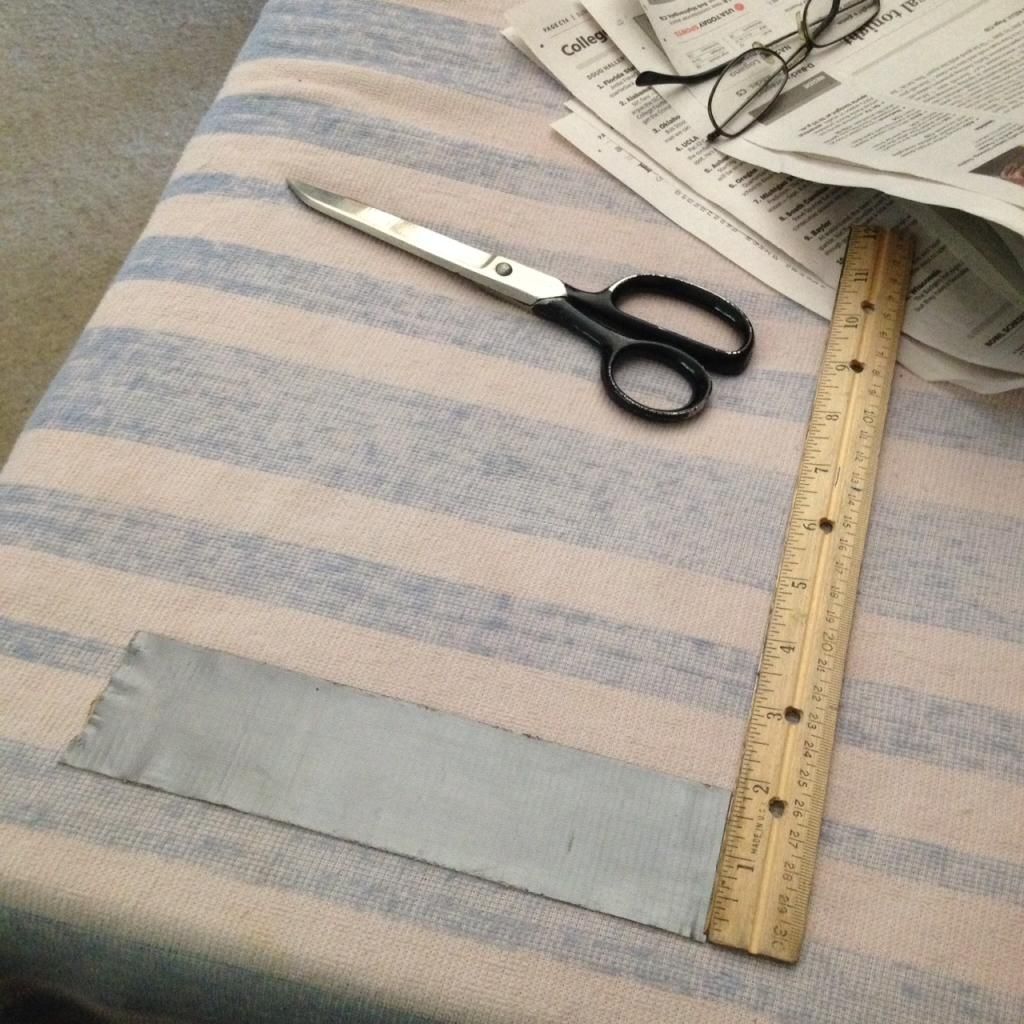
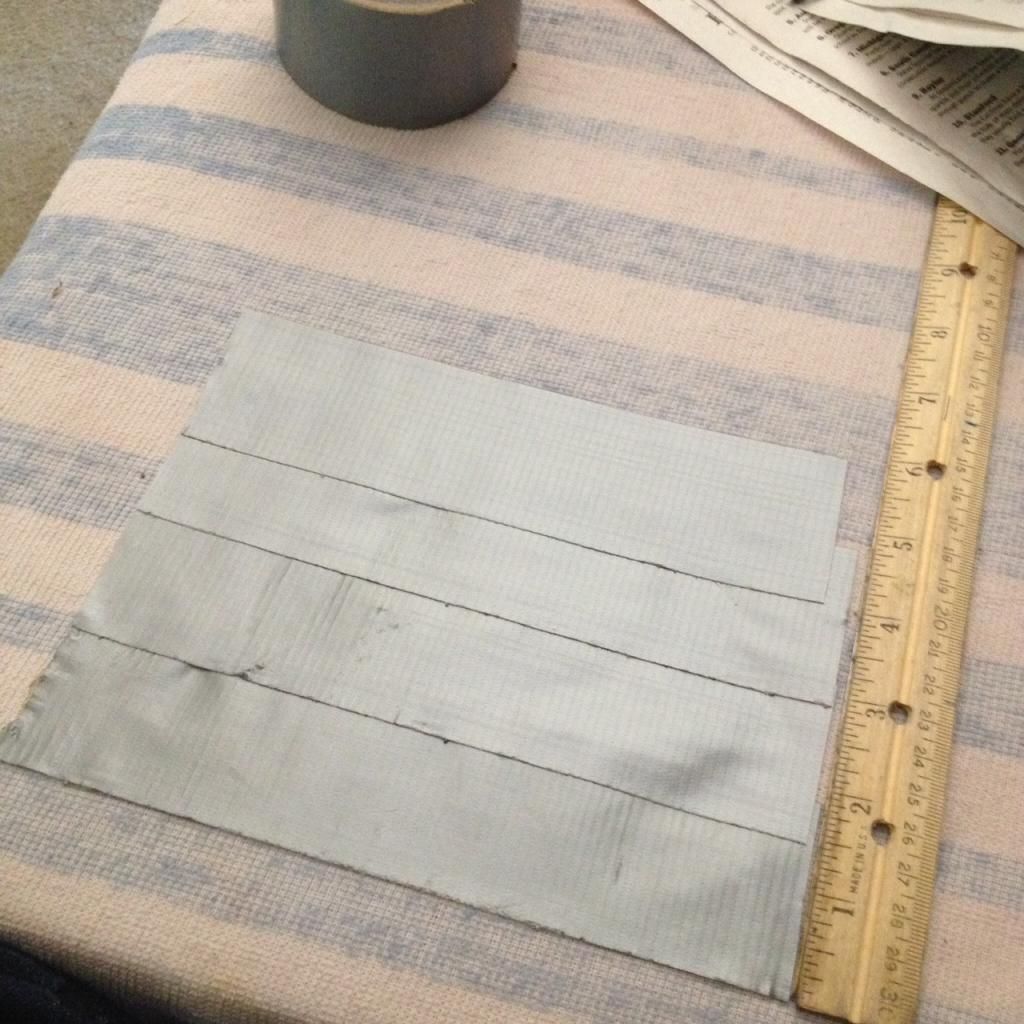
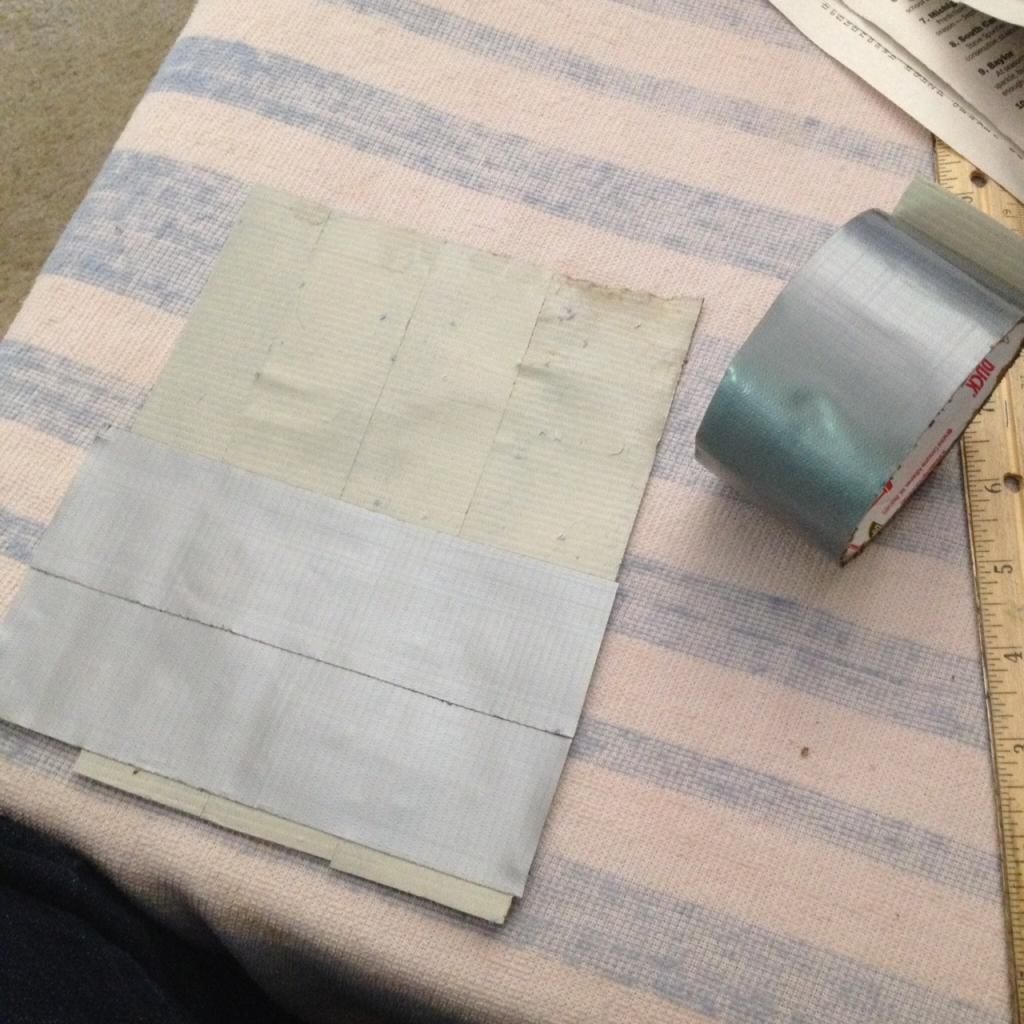
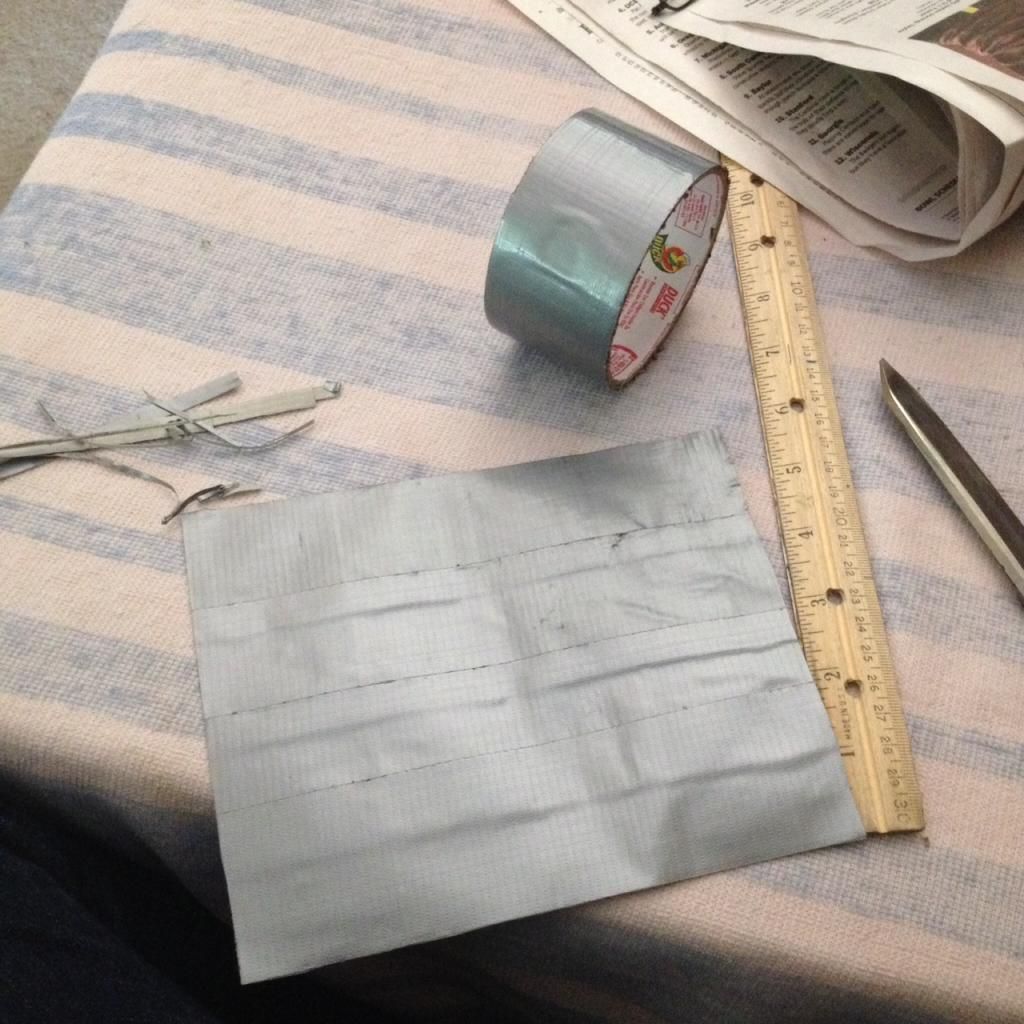
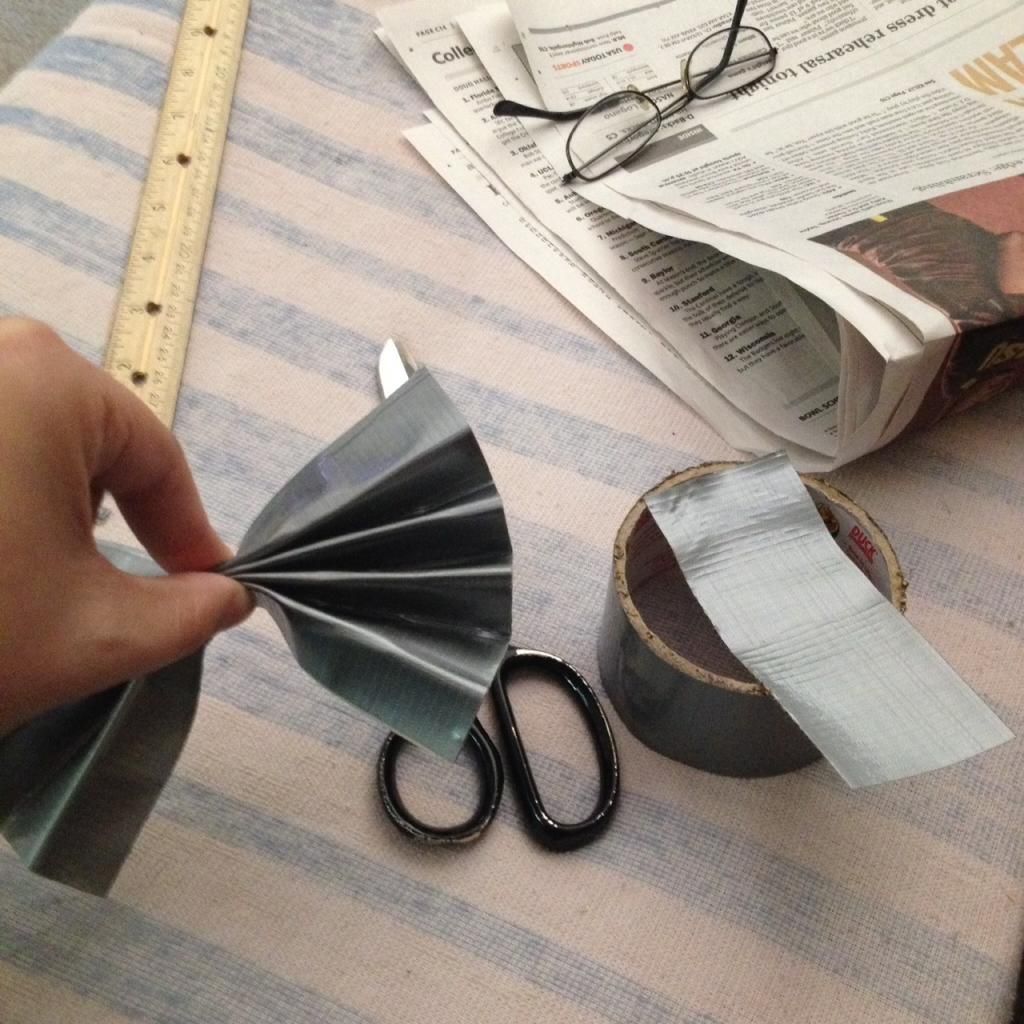
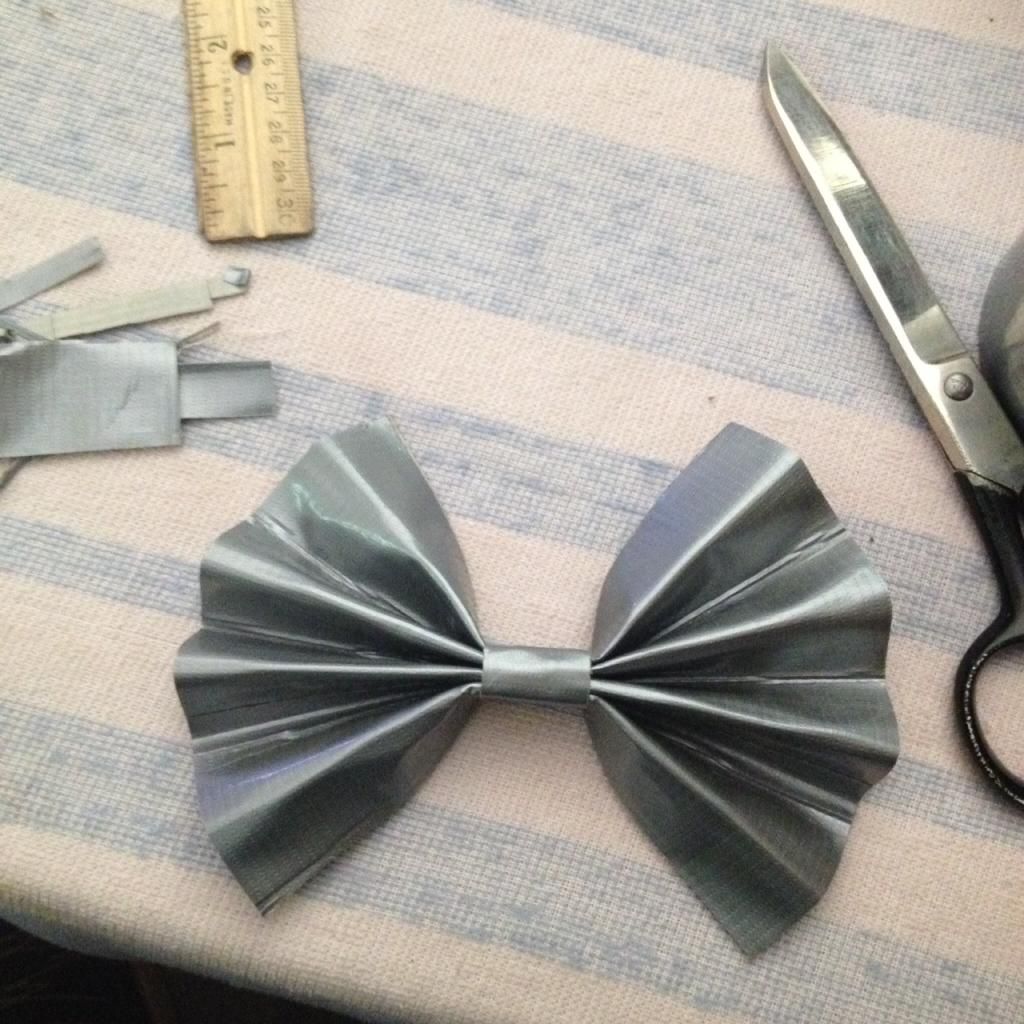
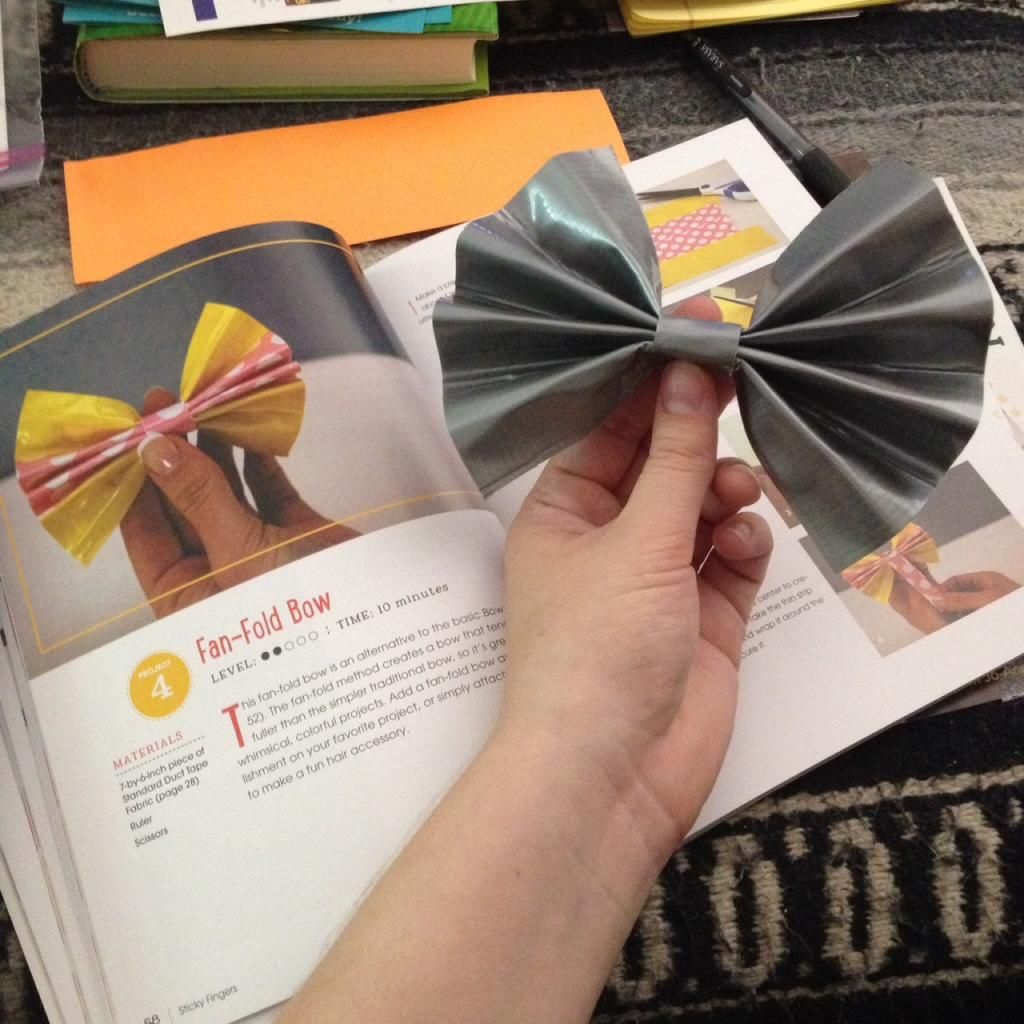
My bow turned out a little bigger than I had expected, but I quite like it and think it might look extra nice if I steampunkify it with gears and such, if I feel ambitious. I found the instructions easy to understand for the most part, and the full-color photos accompanying each step were really helpful. I also appreciated that there was a skill level rating for each project and an estimate of the time needed to complete it (although I wasn’t totally clear if the time required to make the initial duct tape “fabric” needed for each project was included in that estimate).
A lot of the projects are things I probably wouldn’t use or wear (the tie and the money keeper are a little too goofy for my tastes, for instance), but some of the things like a sunglasses case or a makeup pouch for inside your purse could be fun. And some of the ideas, like using clear packing tape to make an ID holder window, or stealing the zipper from a Ziploc bag to use in constructing a pouch, are pure genius! Most of all, I like the author’s emphasis on taking the basics and her ideas to use as a jumping off point for bringing your own duct tape ideas to life. For me personally, I’d rate the book 3.5 stars, since many of the project ideas aren’t really my style, but for kids, teens, scout troop leaders looking for project ideas, those who are already into duct tape crafting, or those who are looking to start, I’d bump it up to 4 stars, since the book is comprehensive and has very diverse project offerings. I think some of my younger relatives would probably really get a kick out of this, and I’d have fun trying out some of these projects with them.
Susan’s Take
I am not a crafter. My catalogue of unfinished craft projects is far larger than my collection of completed ones, especially if you look at things produced after say middle school, when the state no longer required me to spend some 6% of my instruction time in a visual art class, the number of finished projects drops precipitously. Yet when Alyssa said she was interested in this book, there were so many exciting color photos, and it seemed like it would be so darn easy (after all, my tiny cousin-once-removed says she gets loads of duct tape for her birthday) that I said of course I'd try it out.Ha. It's like if your friend says, "Let's run five miles," and you've gotten rides home after walking half a block. Because duct tape crafts are deceptive. They look so bright and cheery that they seem to suggest an eternal essence of good humor, when in reality they are the most irritating things in the world to piece together. To be fair, however, I am basing my assessment of duct tape crafting only on my experience in making a tote bag from the instructions in Sticky Fingers. I could be missing an entire world of angst-free duct taping.
And suuuuuuure, a good portion of my problems in duct taping stemmed from my disinterest in every project in the book except for a tote bag. I love tote bags. Out of the projects in the book, this is one of the hardest: it's 5-stars difficult. Yet, the book claims it's just a simple matter of combining some woven duct tape fabric pieces (a project rated only 3-stars of difficulty), and furthermore tells me that it should take a mere 2 hours.
Thus after finding the tote bag craft, I headed to my nearest craft stores and located their duct tape shelves. All the pretty duct tape is expensive, but some, I found, had price tags that seemed to be made in a different currency to justify the mark-up. My mother and I searched through the book for guidance on how many rolls of duct tape I needed, and decided that based on the advice to start with only three rolls, two patterned rolls and one solid roll would suffice for one project. This turned out to be the case, but it was quite a bit more confusing than I thought it needed to be for me to figure out how much tape to buy. It's relatively easy to pick through books and find things that catch your eye before you realize their size, and I would have found it helpful for author Sophie Maletsky had given some estimates of tape use for her project. This was particularly the case in the tote bag project. To make the tote bag, all you need are two pieces of 10x10 woven duct tape fabric, and three 10x5's. If you turn to the page about basic weaving method, you will find advice about the quantity and length of strips you'll need to make square pieces of woven cloth, but in this case I would have preferred a table for quick reference.
The other problem we had in the craft stores was that we just couldn't figure out which colors and designs to pair with each other. We noticed that the example of the tote bag in the book used three complementary patterns, but partially from budget and partially from an inability to find an appropriate third roll of tape, I only bought two. A few pages about how to choose colors and patterns to contrast with each other would have been very helpful in this respect, though perhaps the target audience is experienced crafters who innately understand this skill.
Once home and crafting, I had even more trouble. The instructions for basic duct tape strips (the material for the woven fabric) would have been better if they had explained that your best way to avoid bubbles and creases is to start folding the tape at the center of your strip. Several of my strips bear the scars of my attempt to start with the ends, as per the first picture in the instructions. It wasn't until later that I realized the instructional picture was showing someone smoothing the tape out to the ends. The pictures showing how to piece together the bag are even more confusing, failing to show at what step you put the tape on the interior of the base of the bag.
But by far, the most frustrating thing to me was seeing the time estimate for the beach bag as 2 hours. Nope. A solid six hours after starting, I had a bulging and kind of tattered looking duct tape bag with no handle.
I imagine that this book would be fine for many a crafter like Alyssa, but next time I'll stick to my five-mile runs. 2 stars for me, but I'll join Alyssa in estimating better enjoyment for people planning projects for scout groups, camps, and the like.
I'm heading to a wedding this weekend, but I'll come back and add photos when I finish the handles on the tote. And fix the fraying top. And support the sagging side. And...and... Oh dear. Let's just hope I finish.
*As ever, much as we are grateful for the copies, our review is uninfluenced by its source.







